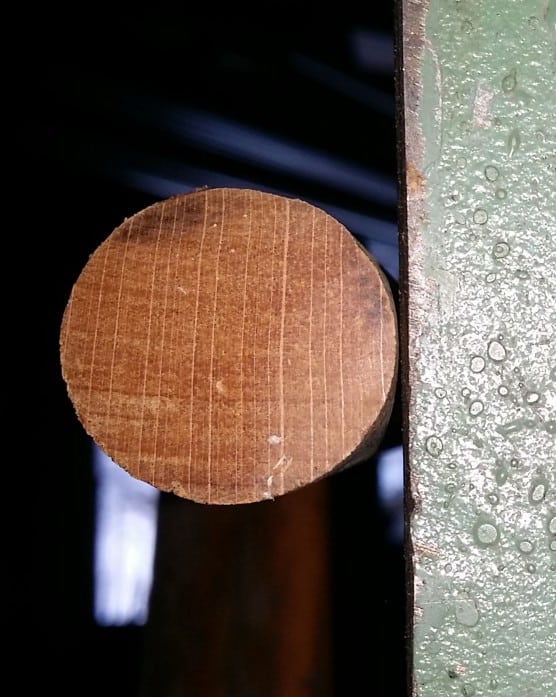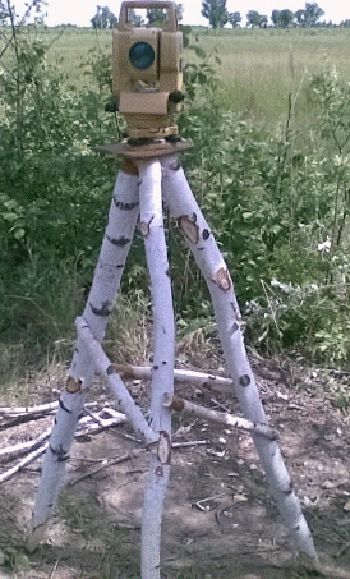The old 70s-80s era heavy duty wood tripods by Wild that were made in Switzerland and yes they were heavy...
Does anyone know what type of hardwood was used?
Were they made in Europe?
Or just branded as such.
I've worked on a few and thought they were Beech.
But I just looked European Beech up and its not stable nor durable.
Still think the ones I have are Beech.
I wanna say Beech - not sure why.
I was looking at one today. The yellow paint had worn off in a few spots and the wood looked reddish like Red Oak or Cherry even.
Being as heavy as they were, I just assumed it was Oak.
Then I wondered if they were made here and the brackets and head were assembled.
Or did they import wood from here to there.
I'm going with ash
http://www.nedo.com/index.pl?Lang=US&Page=products/stative/holzstative.html
Ash grain and oak grain can look very similar. Ash is stronger and more stable.
Make it two votes for Ash.
I had a Nedo. I think it was German made. Heavy like the Wild. Nobody wanted to use it especially when we got the Dutch Hill.
Ash was good for Louisville Sluggers so probably good for tripods
Maybe different timbers used over yonder but Ash and Beech have different grains and the ones I have are Beech like.
From Leica site.
Leica Geosystems tripods are manufactured solely from wood or aluminium. Wood, especially the beech and pine used by Leica Geosystems, offers the best stability values, measured on vertical movement and horizontal drift over time. Wood also exhibits optimal vibration characteristics and therefore delivers substantial benefits
Richard, post: 429840, member: 833 wrote: Maybe different timbers used over yonder but Ash and Beech have different grains and the ones I have are Beech like.
From Leica site.
Leica Geosystems tripods are manufactured solely from wood or aluminium. Wood, especially the beech and pine used by Leica Geosystems, offers the best stability values, measured on vertical movement and horizontal drift over time. Wood also exhibits optimal vibration characteristics and therefore delivers substantial benefits
I m trying to find out specifically about the Wild tripods from 30 years or so ago.
Yes I realised that Robert but I would assume Leica continued the Wild tradition.
My experience with legs and repairs etc goes back to 1966 which are the ones I'm referring to, plus some lot later ones which look similar timber.
Actually my Sokkia ones don't look like Ash, more like Beech, but not sure what the Japanese would use.
I see Berlebach in Germany still make tripods (photographic) from wood. They use Ash.
I'll dig some old parts out and have a look at the raw wood.
Currently old intact ones are well painted
Thanks Richard
The easiest way to identify oak is to look at the annual rings on the end. As seen on the photo but Richard, you can see the pith rays, which produce the fabulous character on quarter sawn oak, but the summer wood on the annual growth rings is extremely porous, with many "holes" (Wood Taxonomy 101) . I still have one of the old Wild unpainted, with green painted over brass tripods which came with a T1 or T2 (date of tripod unknown). When I get time I will take a look.
When I find these, I boil the metal parts in apple cider vinegar to remove the paint, 0000 steel wool the legs, add some lite walnut Watco oil and transform them into floor lamps for land surveying scholarship auctions. I like to see them auctioned off around the middle of the auction when money is still available and potential buyer are sober enough to bid. The record is currently around $800 per lamp.
I have some 20+ year old Leica legs that are about the same as the current versions and I don't remember any difference for the Wild legs (with the exception of the self locking feet) that I used prior to going out on my onw said 20 years ago. As for heavy, I think they are light compared to TriMax. And to top that, I do think they are more stable.






